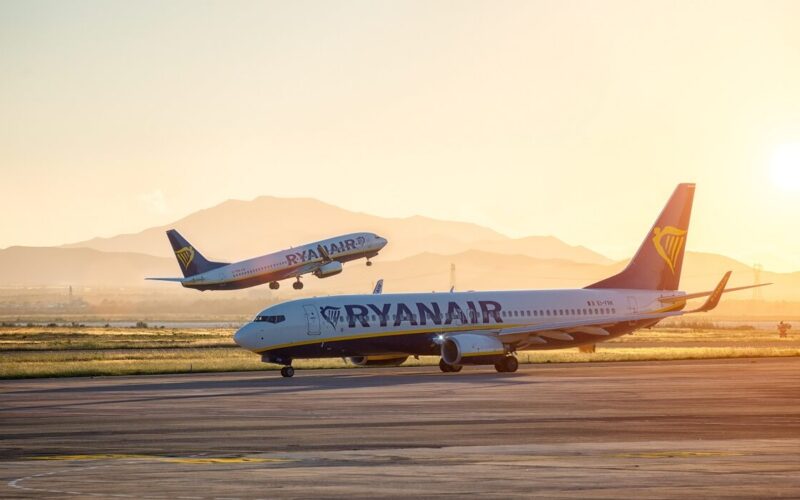Ryanair Group has confirmed that it will receive only 10 Boeing 737 MAX aircraft in 2020. Due to the drawback, it now expects to carry 1 million fewer passengers than previously planned in summer 2020 and is closing several bases.
Ryanair to close Nuremberg, Stockholm Skavsta bases
Ryanair will close at least two more bases, namely Nuremberg and Stockholm Skavsta, as it is “revising” the summer 2020 schedule and growth projections, the company disclosed in a statement for investors on December 4, 2019.
Ryanair has two aircraft stationed in Nuremberg and four in Stockholm Skavsta. The bases will be closed in March 2020.
Some other bases will also be affected but the carrier currently does not reveal which ones in particular. “We also expect to cut summer capacity in a number of other existing bases, and we are currently in discussions with our people, our unions, and our affected airports to finalise these minor reductions,” the disclosure reads.
Ryanair expects only 10 Boeing 737 MAX 8s in 2020
The decision is directly based on Boeing 737 MAX delivery problems. “We regret these two further base closures and minor capacity cuts at other bases which are solely due to further delivery delays to our Boeing MAX aircraft,” said Eddie Wilson Ryanair DAC CEO according to the statement. “We are continuing to work with Boeing, our people, our unions and our affected airports to minimise these capacity cuts and job losses.”
In late November 2019 news emerged that Ryanair would only receive 10 Boeing 737 MAXs in 2020 instead of the 20 expected. They also indicated that delays might be related to a newly discovered design issue with the over-wing exit on the airline’s modified MAX 8 model, but the information remains unconfirmed at the time. The planes are expected to arrive no earlier than May 2020, as the type remains globally grounded.
Boeing 737 aircraft makes up the vast majority of Ryanair’s 475 aircraft fleet, with the only exception being the 23 Airbus A320s operated by Lauda Motion. Since 2014, the Irish low-cost carrier has a firm order for 135 newer version 737s ‒ the MAX ‒ due to replace some of the oldest 737-800s. The company has high hopes for the new planes: they are to fit 4% more seats, be 16% more fuel-efficient and in general, “deliver significant unit cost savings for the next 5 years”. So when the MAX got grounded in March 2019, the operator was exposed to increasingly piling up roadblocks. And Ryanair, being Ryanair, has been vocal about them.
Initially, it was expecting the first deliveries to arrive in the second quarter of 2019, but the schedule has been postponed several times. In its 2019 half year results, the airline stated it expected the deliveries of the MAX in March-April 2020 at the earliest, but admitted that “the risk of further delay is rising”. At the time, Ryanair was prepared to induct 20 MAX planes (from the previous, gradually reduced, figure of 58) before the peak 2020 summer season.
In July 2019, the airline pointed finger at the MAX issue when it announced base closures for the winter season. “As announced on July 16, 2019, due to the late delivery of up to 30 Boeing MAX aircraft this winter a number of Ryanair bases will be cut or closed this winter. Ryanair did not specify which bases are going to be closed at the time.
In August 2019, the Irish low-cost carrier revealed plans to fire 900 employees. The same argument was used to explain the motive for the move: Ryanair was already expecting to receive a lower number of planes for summer 2020. At the time, it expected 30 aircraft to arrive. Terminations were to be carried out in three rounds: in September 2019, October 2019, and “again after Christmas”.
Boeing is currently working on fixing the MAX software and getting the plane re-certified, following two deadly crashes in November 2018 and March 2019, that together claimed 345 lives. A malfunction of the MCAS software system, which is installed on the planes, was pin-pointed among the main reasons for both accidents.

